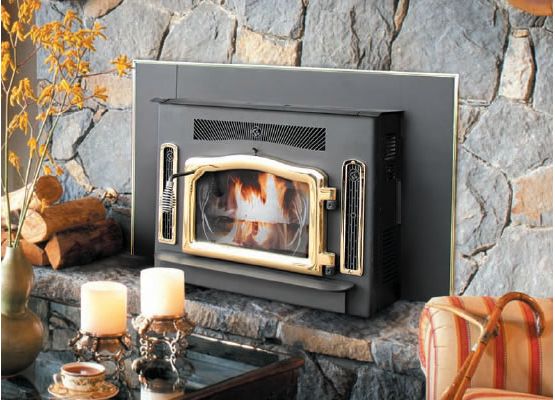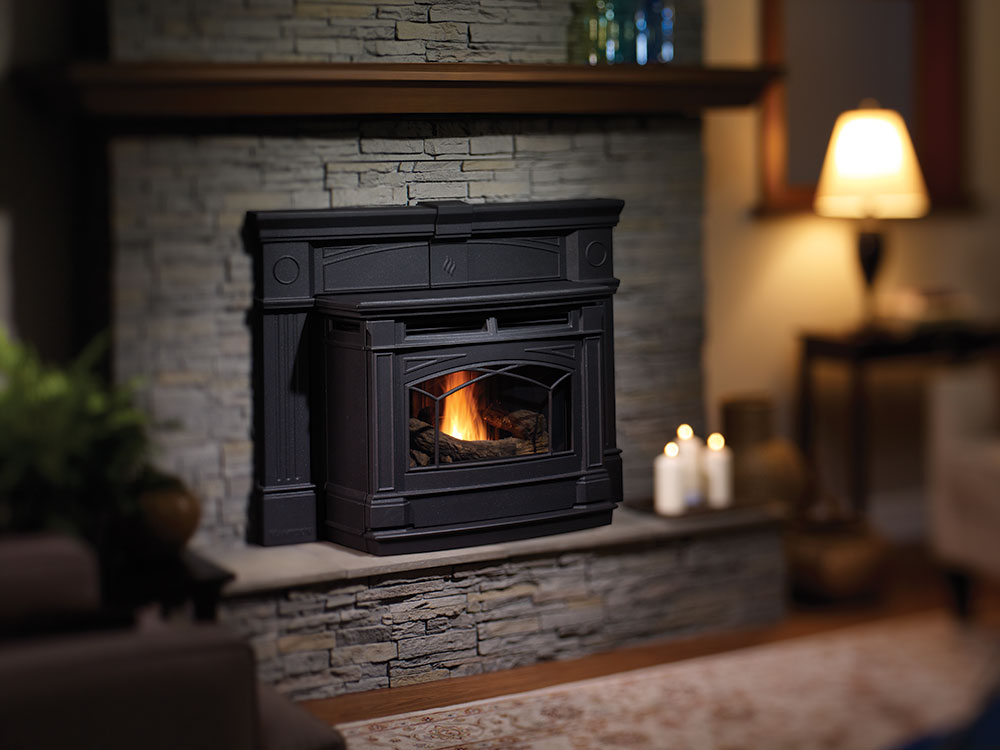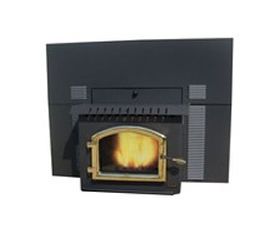Corn burning fireplace inserts are an alternative to traditional wood-burning fireplaces. They use corn pellets as a fuel source, which are a renewable and affordable resource. Corn-burning inserts are gaining popularity among homeowners seeking an eco-friendly, cost-effective heating solution. This article will explore the advantages and disadvantages of corn-burning fireplace inserts, how to install and maintain them, and their environmental impact.
Advantages of Corn Burning Fireplace Inserts
Corn-burning fireplace inserts have become popular for homeowners looking for a sustainable and cost-effective heating solution. These inserts use corn pellets as a fuel source, which are a renewable and affordable resource. Let’s discuss the advantages of corn-burning fireplace inserts in detail.
Cost-Effective Heating Solution
Corn-burning fireplace inserts are a cost-effective heating solution compared to traditional fireplaces. Corn pellets are a renewable resource and are readily available in most regions. The price of corn pellets is also lower than the price of traditional firewood, making it an economical option for heating your home.
High Heating Efficiency
Corn-burning fireplace inserts are highly efficient and can heat a larger area than traditional fireplaces. These inserts have a high BTU output, which means they can produce a lot of heat using a small amount of fuel. This efficiency translates into lower heating bills and less time spent refilling the fuel source.
Eco-Friendly Heating Solution
Corn-burning fireplace inserts are an eco-friendly heating solution. Corn pellets are made from renewable resources and produce less harmful emissions than traditional firewood. These inserts are also EPA certified, meaning they meet strict emissions standards and are better for the environment than traditional fireplaces.
Low Maintenance
Corn-burning fireplace inserts are low maintenance compared to traditional fireplaces. They require less cleaning and maintenance because they produce less ash and creosote buildup. Corn pellets also produce fewer emissions, reducing the risk of chimney fires.
Easy to Install
Corn-burning fireplace inserts are easy to install and can be done by a professional or a DIY enthusiast. The inserts are designed to fit into existing fireplaces, eliminating the need for major renovations. The installation process is quick and easy, and homeowners can start using their new fireplace insert immediately.

Corn-burning fireplace inserts offer numerous advantages for homeowners looking for an eco-friendly and cost-effective heating solution. These inserts are highly efficient, produce less harmful emissions, require less maintenance, and are easy to install. If you are considering a fireplace insert for your home, corn-burning inserts are a great option to consider.
Country Flame Crossfire Flex Fuel Corn/Pellet Fireplace Insert
FIREPLACE INSERT VINTAGE CORN PELLET STOVE CAST IRON, Antique
Pellet and Corn Inserts – Albany NY – Northeastern Fireplace
AIR FILTER KING FIREPLACE INSERT CORN WOOD PELLET
Pellet Stove Inserts: The #1 Pellet Fireplace Inserts Store
GCI60 Cast Iron Pellet Stove Insert Regency
Pellet and Corn Inserts – Albany NY – Northeastern Fireplace
FIREPLACE INSERT COLONIAL CAST IRON CORN STOVE, 60,000B
Both wood pellet and corn stoves heat rooms efficiently – silive.com
Pellet and Corn Inserts – Albany NY – Northeastern Fireplace
FIREPLACE INSERT VINTAGE CORN PELLET STOVE CAST IRON, Antique
Magnum Winchester Corn/ Pellet/Biomass Fireplace Insert – WIN-ACI
Amazing Technologies for Pellet Stoves Quadra-Fire Blog
Related Posts:
- Wall Mount Gas Fireplace Inserts
- Upgrade Fireplace Insert
- Cast Iron Fireplace Insert
- Propane Heater Insert For Fireplace
- How To Change A Fireplace Insert
- Ethanol Gel Fireplace Insert
- Craftsman Fireplace Insert
- Round Gas Fireplace Inserts
- Smokeless Fireplace Insert
- Cast Iron Stove Insert Fireplace
Corn Burning Fireplace Inserts: A Sustainable and Cost-Effective Alternative Heating Option
As winter approaches, many homeowners are looking for ways to keep their homes warm and cozy without breaking the bank. One option that is gaining popularity in recent years is corn burning fireplace inserts. These inserts offer a sustainable, cost-effective, and efficient way to heat your home while reducing your carbon footprint. In this article, we will delve into the benefits of corn burning fireplace inserts, how they work, and some frequently asked questions about this heating option.
What are Corn Burning Fireplace Inserts?
Corn burning fireplace inserts are units that are designed to fit inside an existing wood-burning fireplace. They are essentially stoves that burn shelled corn instead of wood. The process involves pouring the corn kernels into the hopper, which feeds them into the combustion chamber. The heat generated by burning the corn is then used to warm up your home.
Benefits of Corn Burning Fireplace Inserts
1. Sustainability: Corn is a renewable energy source that is grown domestically, making it an eco-friendly alternative to fossil fuels.
2. Cost-effective: Corn is a relatively inexpensive fuel source compared to traditional heating options such as oil or propane. Also, since corn is grown locally, transportation costs are minimal.
3. Energy-efficient: Corn burning fireplace inserts have high efficiency ratings, meaning they can produce more heat with less fuel compared to traditional fireplaces or wood stoves.
4. Low maintenance: Compared to wood-burning fireplaces, corn-burning inserts require less maintenance since there are no ashes or creosote buildup.
How Do Corn Burning Fireplace Inserts Work?
Corn burning fireplace inserts work similarly to wood-burning stoves but with some key differences. Here’s how they work:
1. Fueling the insert: The first step in using a corn burning fireplace insert is filling the hopper with shelled corn. Once filled, the hopper feeds the corn into the combustion chamber automatically.
2. Combustion: As the corn enters the combustion chamber, it ignites and burns hot. The stove’s fan blows air over the flames and into your home via ductwork.
3. Heat distribution: As mentioned earlier, heated air from the stove is distributed throughout your home via ductwork or blowers.
Frequently Asked Questions about Corn Burning Fireplace Inserts
1. How often do I need to refill the hopper?
The frequency of filling depends on your usage and the size of your hopper. Some hoppers can hold up to 60 pounds of shelled corn and can last up to 24 hours before needing a refill.
2. Is it safe to burn corn in my home?
Yes! Burning corn produces less creosote than wood-burning fireplaces, making them safer for indoor use.
3. Can I use regular field corn instead of shelled corn?
No! Field corn has a higher moisture content than shelled corn and will not burn as efficiently as shelled corn.
4. Are there any downsides to using a corn-burning insert?
One potential downside is that they produce some smoke and smell when starting up since they must ignite the dried kernels first before producing heat for distribution throughout your home.
Conclusion
If you’re looking for an eco-friendly and cost-effective way to heat your home this winter season, consider investing in a corn-burning fireplace insert. This heating option offers numerous benefits such as sustainability, cost-effectiveness, energy efficiency, low maintenance, and safety compared to traditional fireplaces or wood
Stoves. With proper use and maintenance, corn burning fireplace inserts can provide a reliable source of heat for your home while reducing your carbon footprint. So why not give it a try and see how much you can save on your heating bills this winter season?
I don’t have personal experiences, opinions, or feelings. However, I can provide you with more information about corn burning fireplace inserts.
Corn burning fireplace inserts are stoves that use corn kernels or other biomass materials as fuel. They are an environmentally friendly alternative to traditional wood-burning stoves and fireplaces because they produce fewer emissions and use renewable resources.
They can be installed in existing fireplaces or used as standalone units. Corn burning stoves are easy to use and require minimal maintenance. They can heat a medium-sized room and reduce your heating bills compared to traditional heating methods.
If you’re interested in using a corn-burning stove, make sure to follow the manufacturer’s instructions for proper use and maintenance. Keep the stove clean, and have it inspected annually by a professional to ensure safe operation.
Overall, corn burning fireplace inserts can provide a reliable source of heat while reducing your carbon footprint. So why not give it a try and see how much you can save on your heating bills this winter season?










.jpg)

